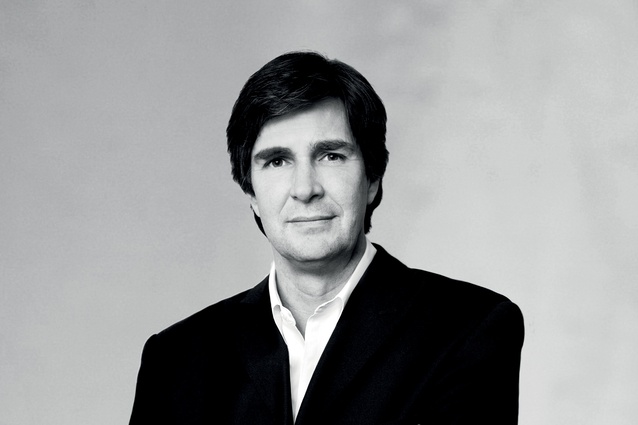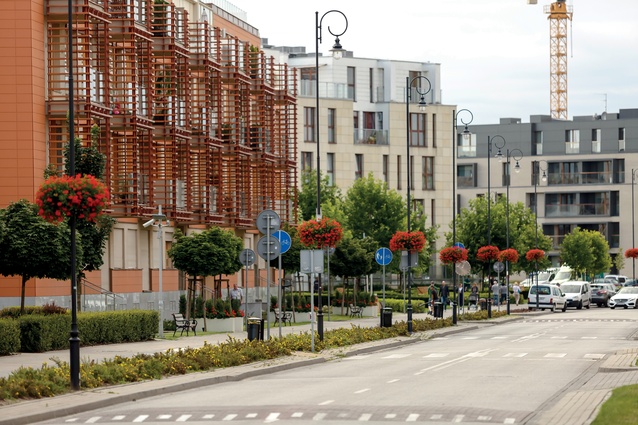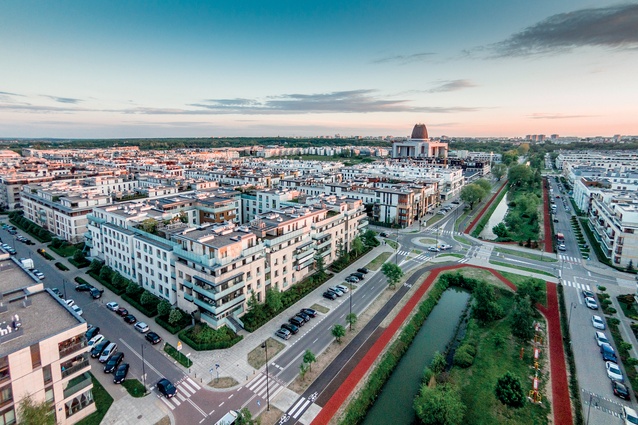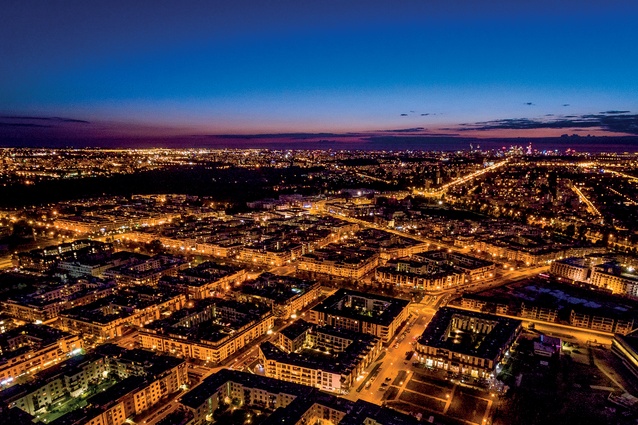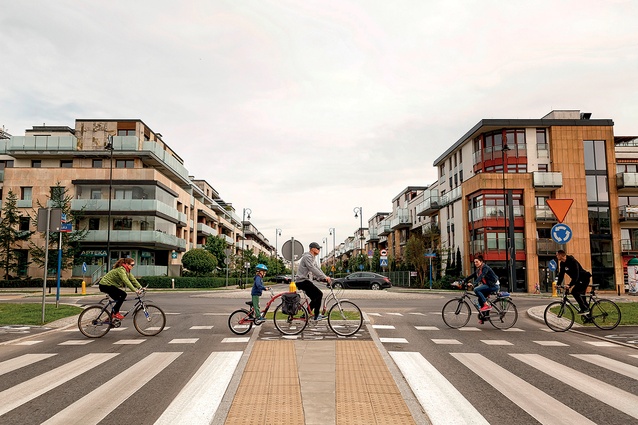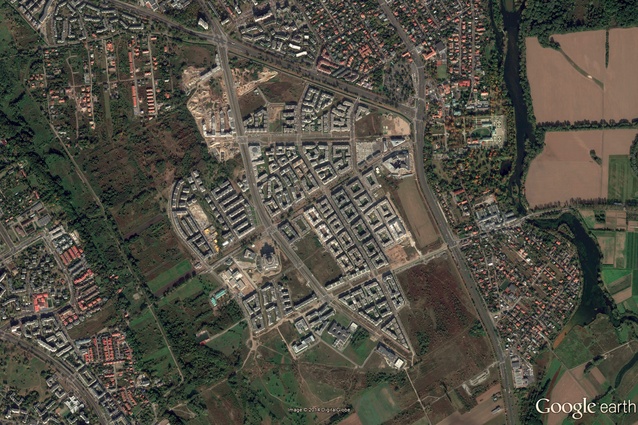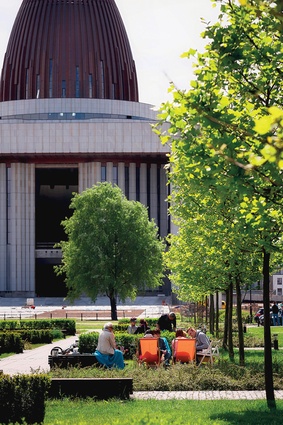Designing human-centric cities
Guy Perry is AECOM’s executive director buildings + places, APAC, and is based in Hong Kong. He is passionate about creating environments that are healthier for all of us. He recently travelled to New Zealand as keynote speaker for the NZCID Building Nations Symposium, where he chatted with Justin Foote from Progressive Building about Miasteczko Wilanów in Poland, the largest urban development in Europe this century.
PROGRESSIVE BUILDING: What does your role at AECOM entail?
GUY PERRY: My focus is on how we create built environments that encourage people’s well-being. If we can do that properly, then we’re balancing our lifestyles with the environment – that’s the big picture, anyway.
PB: Is there a ‘golden rule’ for achieving that sort of balance?
GP: What I’ve learned over the years while looking at sustainability is that there is a very tight relationship between environmental sustainability and people’s well-being. As we create environments that are better for us as individuals – in other words, in which we’re not as sedentary – then we’re actually creating environments with much lower carbon footprints as well.
One of the things I was doing previously was analysing different parts of American cities to see which of those areas had the lower carbon footprints and how that would correlate with health data. What I found was that you need mixed-use neighbourhoods of a certain density in order to really promote the walkability of those places, which is the key trigger in getting people to have that more balanced life.
PB: One of the arguments I would put forth is that in a city such as Auckland the density idea is going to be a hard sell because you’re up against the notion of people having to give up something they believe to be a birthright – a single-family house on a large block where every member of the household has their own car. How do you address that?
GP: I believe there’s a realm in between. Firstly, those kids in that suburban environment grow up and move out; actually a lot of those kids are driving that urbanisation because they’re getting bored out on the edges and once they reach a certain age they’re spending their evenings going out in the city – so, you’ll find the ‘sell’ is not that difficult.
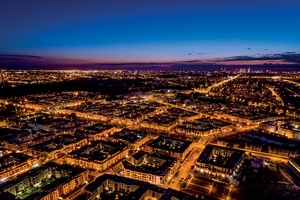
What you’ll also find is that basically people like to walk; they like to get out and about. The equation is about movement patterns and either it’s pegged to the car or other automated systems, or it’s pegged to whatever forces us, in a good way, to get in those 10,000 to 15,000 steps a day. But you’ve got to get to that point where people want to be walking in a street in which they feel engaged.
I think it’s also going to be a generational shift, where the kids who grew up in the suburbs will want a more urban realm. The question is: what urban realm do you want? There’s a lot of talk about smart cities and a smart city is certainly the answer, although you have to know what question you’re asking. What we need to answer is: how do we focus on people’s well-being? Technology can support that, but it’s not just the answer: technology is also part of the challenge.
And that’s how we’re dealing with it at AECOM throughout the Asia-Pacific region. We’re looking at it first on a human metric. How do we make places for people if they’re not comfortable with high density? Simple, you don’t make high density, but you do make higher density, though always with a human dimension – you have to keep people engaged at every point along the journey.
PB: But isn’t that the suburban dream – all the amenity your lifestyle demands?
GP: The advantages of suburbia, I’ve found, have largely disappeared; it used to be nice, with your stand-alone house, to have a lawn and actually use it. However, today with the new typology, it’s no longer suburbia as we dreamt it and what you find is your actual lifestyle isn’t that different to living in an apartment in the city – which is actually more efficient to having a stand-alone house on a section somewhere. The key is to develop it at a scale where it starts to build a neighbourhood, a district, etc., so that it’s no longer an isolated project – the trick is to get it to be a fabric of life.
PB: Again, the perception is that inner-city and city-fringe living is out of reach for most because the cost of residences is prohibitive when compared to those in the suburbs.
GP: That’s an argument I hear all the time and the simple reality is that it is a skewed one. It may be a default choice because that’s what the market is providing, but what many people fail to do is look at the real costs associated with living in the suburbs versus living closer to the city centre. The real cost is not just housing: you’ve also got to factor in the car, or, in many instances, cars. And even then, the real cost is not just the car – it’s the car, plus petrol, plus insurance, plus maintenance costs and on it goes.
Let’s take Boston as an example and Cambridge, to the city’s north, versus the western suburbs. So, your housing costs in Cambridge may account for 30 per cent of your income but your travel costs may only be 10 per cent of your income. Living out west you may be spending only 20 per cent on housing, so you think: okay, I’ve made a big saving – yet you’re going to be spending 20 per cent of your income on transport.
At the end of the day, would you rather be living in Cambridge or out west? Now, one of the key differences is the bank makes it a lot harder to borrow money for your housing than it does for your car – they’ll practically give you the money for your car. So, in a sense, we’re pushed into a certain lifestyle, which, given the residual impact of that lifestyle both on the environment and on our own health, doesn’t make any sense.
PB: Many politicians, scientists and advocacy groups have been championing the environmental cause for decades and yet the drive to urban sprawl is still happening…
GP: It’s true: most people see the environmental impact of modern-day living as someone else’s problem. However, the impact on health they see as their problem or that of someone in their family, because statistically it is now so significant that it is no longer the exception but the rule. So what we have to figure out is, how do we bring that facet to the fore? And, what I find is – whether it’s for an individual or for a political agency or whether it’s for a private entity that wants to do marketing – the health angle tends to be one of the most effective arguments today.
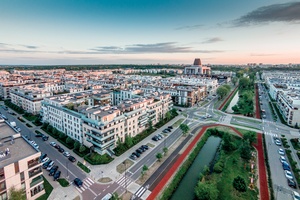
If you can show people that this is not just about increasing density, it’s actually about well-being – and one of the beauties about a city like Auckland is that your air quality is so good (your PM2.5 count is something that they have not seen in China for probably 40 years) – then the problem of density is a non-issue. However, I would caution about the problem of over-verticalisation, which has other challenges associated with it. And that’s why I’
m an advocate of high-density environments but not necessarily high-rise ones. The key for me is the walkability and mix of activities.
PB: So, how is the modern lifestyle detrimental to our health?
GP: Across the planet we’ve seen a very rapid growth in what we term non-communicable diseases (NCDs), what some people call lifestyle diseases. Basically they’re a by-product of wealth and an increase in sedentary time, which is occuring literally everywhere today. It happened most noticeably in the US over the past few decades and the interesting thing about it is that people think that it’s driven by diet, but that’s only partially true.
It’s driven even more by the fact that we are perhaps making life too easy on ourselves. That may sound strange but the fact is our bodies do not evolve as quickly as our technology evolves; we’re physically designed to walk 10,000 to 15,000 steps per day and, for the most part, we’re just not doing that.
PB: How do you set about achieving that within an urban context?
GP: What we have to do is shape environments where we naturally want to be as human as we should be, which means walking in both the horizontal and vertical dimensions. At an individual building scale that’s kind of what you have to do, but it’s at the city level where we’re probably farthest from getting that equation right – particularly in America, where we have had suburbanisation of our cities to the point where there is no option but to get around in vehicles.
PB: So, how do you go about shaping the environment to create that balance?
GP: One of the examples of this was the extension of Warsaw that I worked on for a number of years. Miasteczko Wilanów was the largest development – 450h – in Europe this century. It was privately financed and was all designed and set out by local architects and engineers under my guidance. I had to set up a series of rules – they had previously been established under the old communist planning authority – that would, essentially, bring the city into the 21st century.
There were two desired outcomes in addition to providing a return on investment. They were: one, create a neighbourhood that would represent democracy; and, two, to really focus on people’s well-being – the way to do that was to maintain that human metric. With that particular project we ended up with a density of around 10,000 people per square kilometre; so it was very dense, but the maximum height of the buildings was 14.5 metres, or five storeys, yet we still achieved the highest density in that city.
It has to do with how you lay it out – how much land you’re giving over to roads and how much land you’re giving over to on-street parking. In this case, we incorporated parking under the buildings. This allowed me to utilise the smallest legal dimension for the streets. The idea that we build cities today for the needs of the automobile is actually not a very well-thought-out notion.
In a sense we need to be thinking in a different dimension – to reposition human accessibility within that framework – because if you lay out everything for cars, you end up with a metric that puts everything outside of walking distance. Once you establish that sort of metric you’re pretty much cooked, in terms of getting people out there and walking and making connections.
PB: What outcomes did you need to achieve with this development?
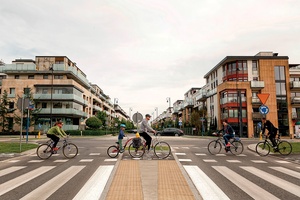
GP: Being privately financed, we had to make the economics of low-level/high-density buildings work so we could achieve the level of return that would appeal to international and local investors. The important outcomes of that project, for me, were not just that we had the very good returns for investors but ultimately to have measurably better health for the people living there – with life expectancies better than 85 years and sometimes 90 years in a country where the life expectancy is usually in the mid-70s.
We had the lowest childhood obesity rates in the city; low neoplasm rates – either the lowest or second lowest – of all the districts in the city; the lowest crime rate in the city; and, the highest birth rate in the country – 18 births per thousand versus the country rate of 9.6 per thousand – which, surprisingly, also went with having the most educated women in the country. Surprising because global statistics show well-educated women tend to have the lowest birth rates of any group of women.
PB: Those outcomes sound incredible but surely what we’re dealing with here is a middle-class, gated community-style development?
GP: On the contrary – one of the prime directives was how we would incorporate different classes into our neighbourhood. We did this by integrating apartments that ranged in size from 250m2 down to 30m2 within the same building. So you’d have a music school teacher, or someone like that, living in the same building as that of one of the wealthiest people, who might be president of a company or on the European senate.
And of course their kids would all be interacting on the playground as every resident has a playground within 70 metres of where they live, which was a priority, to ensure that the environment was well set up for children. This again plays into the number of storeys in the buildings, because, if you have a building which is only five levels that accessibility allows for kids to get out four or five times a day – rather than just once a day if you’re up on the twentieth floor or if the playground is 500 metres away.
I think it’s also a reason why there is such a low crime rate because there is a feeling of engagement; that courtyard is ours, whoever goes into that courtyard we know. So, although we didn’t gate the community, the courtyards are private for the 100-or-so apartments that might be around them. And then the streets themselves are very much activated as we have many entrances onto the streets and people’s balconies and windows face onto the streets, so the streets became everybody’s business too.
But the most important thing is that everything is within walking distance – shops, cafés and restaurants, veterinarians, schools, churches, larger playgrounds and the rubberised jogging track – and we found that people like to go walking; they like to get out and about.
PB: The area you were developing was a greenfield site. That must have played a role in what you were able to achieve.
GP: Not at all. What we achieved we did because we optimised the use of the site as the zoning was the same as for the rest of the city; yet we made more money and made a more sustainable environment at the same time, because in the rest of the city they’re not even close to 10,000 people per square kilometre. We’ve packed them in, but in a way that was good for the developers and good for the people, by giving them an environment in which they were engaged.
PB: How readily does this type of development translate to other countries?
GP: This is a form of district planning that the Chinese government is particularly interested in, due partly to the fact that statistically by the end of this year, 50 per cent of the Chinese population will be overweight and the diabetes rates are going up very, very fast in that part of the world.
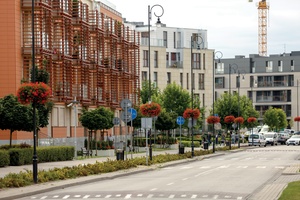
We’ve done a lot of studies around high-rise with Hong Kong University and its School of Public Health. There’s a very high rate of diabetes now in Hong Kong; it’s increasing very quickly and is especially affecting children. So we’re looking at where those people are living and one of the challenges is people living on the upper floors of those very tall high-rises. The children are not getting out, and that’s promoting the sedentary lifestyle that is so often the trigger for a lot of these NCDs.
So we’re looking at whether we either redesign the high-rise or consider a high-density mid-rise proposition. To do that we look at the metabolic equivalent of task (MET) of different activities and we actually add it up in a typical day for someone living in one of these high-rise apartments and then we see why it is detrimental to their health, such as being more prone to diabetes than others. Then it becomes a matter of how can we intervene either within the building or with the activities around the building to help offset this.
Therefore, rather than making a lake, which may be picturesque, we’re going to make a field for kids to engage in a high-MET activity, so they can just kick a football; because in a place like Hong Kong it’s virtually impossible to go out and just kick a football with your kids.
PB: What, then, is the overriding message of all of this?
GP: What I’ve concluded is that it’s the grain, or the human metric, of the city that is fundamental in creating these lifestyles that are more balanced for people. A lot of it is the war against the virtual world – we’re all guilty of it: we all spend x-number of hours online – but the problem is that it is sedentary time and it catches up with us. You shouldn’t have to go to the gym to keep fit; you shouldn’t have to make a special effort. It should just be embedded into the cities we’re building and the cities that we’re expanding.

